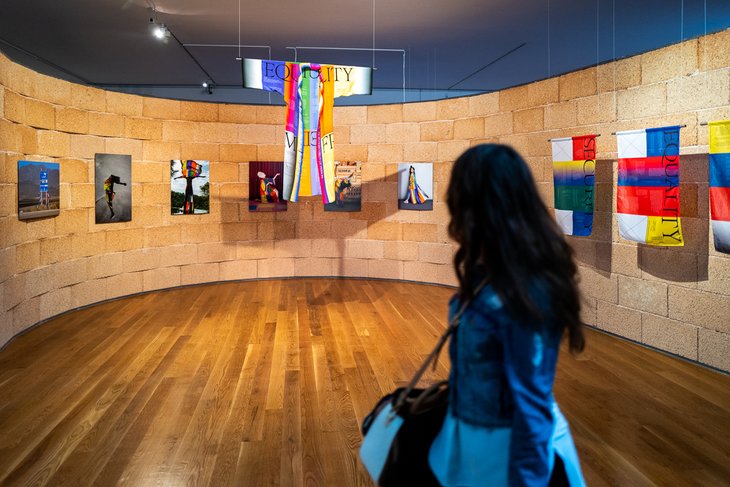"Being Water". Porto Design Biennale invites you to think about more sustainable experiences
Article

Miguel Nogueira
Between the visible and the invisible, the organic and the inorganic, always in the spectrum of the ephemeral, the various exhibitions, installations, and conversations of this year's edition of the Porto Design Biennale is an invitation to think about more sustainable experiences. The initiative, with leitmotif "Being Water" and curated by Fernando Brizio, takes place from October 19 to December 3, between Porto and Matosinhos. Almost six weeks to “discuss and think about the role of design in emerging environmental survival”.
"Petrichor, The Smell of Rain" is the main exhibition of this year's programmatic proposal. Designed by Fernando Brízio and installed at Casa do Design in Matosinhos, it emphasizes the ubiquity of water, its presence and circulation as a central element of connection between all things. It promotes reflection “on aqueous fluid interfaces and how crucial they are to all matter relationships in the world”.
The Palácio dos Correios will be the place for the exhibition "Ligações". "Thought as a collection of objects of mainly national production, starting with a simple glass of water", the exhibition, curated by Miguel Vieira Baptista, states that "water as matter is the central element here, assuming the purpose of creating links between the visitor and the various contents, in an exhibition in which there is no predefined route".
The same space also receives "Catharsis", by Margarida Mendes, a showcase of works by "transdisciplinary research collectives, solidarity movements and activists who report from different bodies of water". "From the Bogotá River to the lower Mississippi River, from the palm trees of Marrakesh to the desertified lands of the Gulf, or to the Channelsea, these collectives establish connections between continuous struggles that take place in watersheds in various parts of the world".
Also in Porto, the Reservatório de Água de Nova Sintra receives the EdenX2.0 installation, where Joana Pestana and Mariana Pestana propose "a digital platform that tests ways of dialogue between humans and non-humans about rivers, their constituents and their respective rights".
Porto Design Biennale will also transform two rooms of the Biodiversity Gallery into a "Cabinet of Curiosities". Proposals from artists, architects and designers make up the exhibition "The WaterSchool Classroom", developed by Studio Makkink & Bey studio, showing sustainable ways of using water and living in community. The purpose is to "generate a debate on how housing, life and work can be rethought and even redesigned taking into account water and its use".
Galicia as guest territory
"Erasing the Line" is the proposal of curator Ivo Poças Martins to visit the Palacete Viscondes de Balsemão – Gabinete Triplex. With a path punctuated by the work of Attilio Fiumarella, "the Cabedelo do Douro area is the territory chosen to raise deep questions about the borders and lines that separate (or unite) the different elements that make up life on Earth".
Once again, the Porto Design Biennale integrates the perspective of other territories. This year, Galicia is the guest and, under the curatorship of David Barro, leads to Galeria Municipal de Matosinhos "Galicia. Processes and Forms", "an expository and editorial project that traces the past, present and future of Galician design ".
In addition to the exhibition activities, the initiative will also have a program of conversations and satellite activities with ten projects selected through an open application that are shown in the areas of gastronomy, film cycles, installations, performances, or an event that starts from the recovery of the board game Petrol.
Promoted in collaboration between the municipalities of Porto and Matosinhos, and organized by esad—idea, Research in Design and Art, the Porto Design Biennale seeks to be a platform for dialogue between civil society, academia, industry, institutions and national and international cultural agents.
The full program can be found on the initiative page.